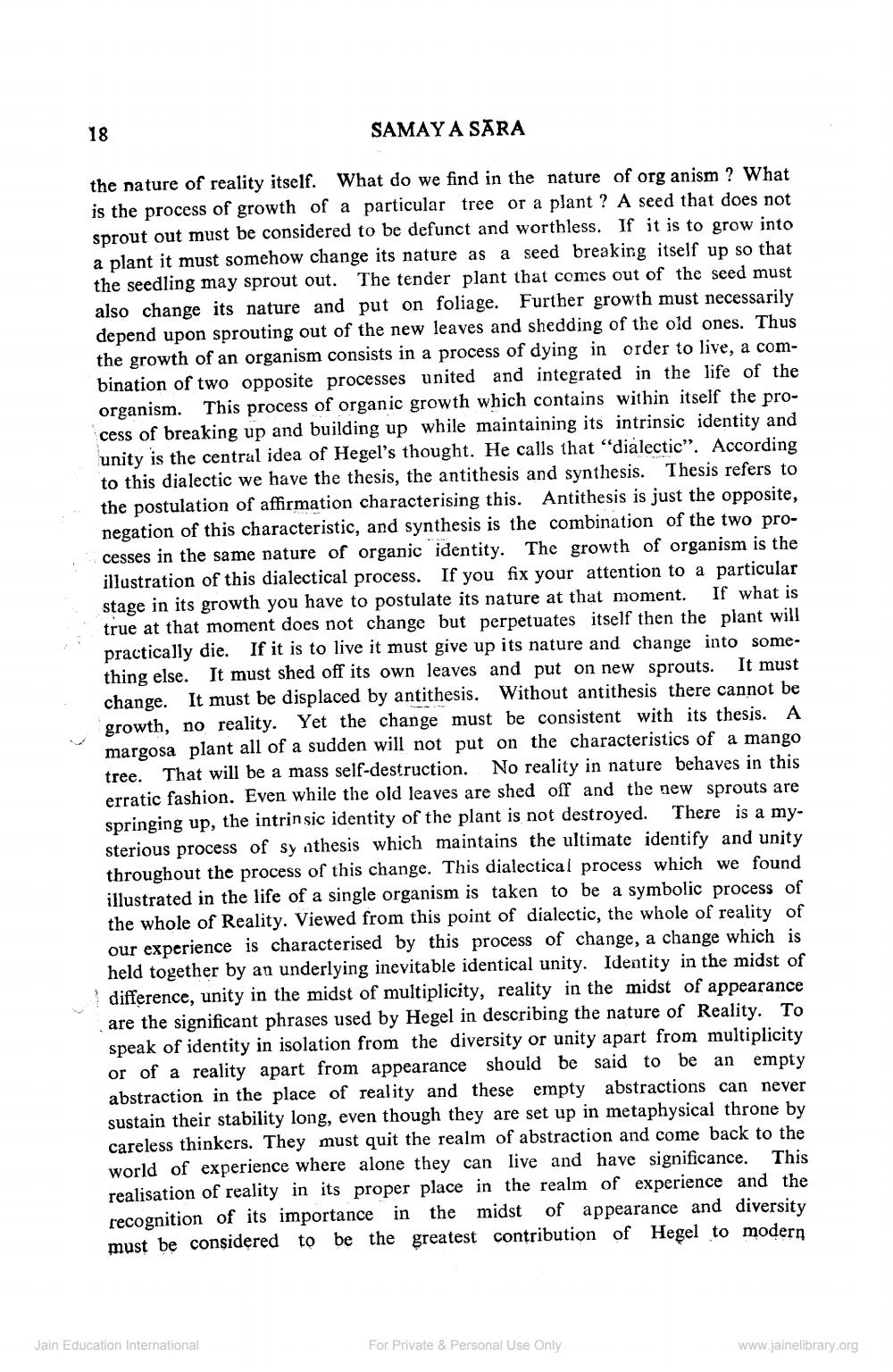________________
18
SAMAYA SARA
the nature of reality itself. What do we find in the nature of org anism? What is the process of growth of a particular tree or a plant ? A seed that does not sprout out must be considered to be defunct and worthless. If it is to grow into a plant it must somehow change its nature as a seed breaking itself up so that the seedling may sprout out. The tender plant that comes out of the seed must also change its nature and put on foliage. Further growth must necessarily depend upon sprouting out of the new leaves and shedding of the old ones. Thus the growth of an organism consists in a process of dying in order to live, a combination of two opposite processes united and integrated in the life of the organism. This process of organic growth which contains within itself the process of breaking up and building up while maintaining its intrinsic identity and unity is the central idea of Hegel's thought. He calls that "dialectic". According to this dialectic we have the thesis, the antithesis and synthesis. Thesis refers to the postulation of affirmation characterising this. Antithesis is just the opposite, negation of this characteristic, and synthesis is the combination of the two processes in the same nature of organic identity. The growth of organism is the illustration of this dialectical process. If you fix your attention to a particular stage in its growth you have to postulate its nature at that moment. If what is true at that moment does not change but perpetuates itself then the plant will practically die. If it is to live it must give up its nature and change into something else. It must shed off its own leaves and put on new sprouts. It must change. It must be displaced by antithesis. Without antithesis there cannot be growth, no reality. Yet the change must be consistent with its thesis. A margosa plant all of a sudden will not put on the characteristics of a mango tree. That will be a mass self-destruction. No reality in nature behaves in this erratic fashion. Even while the old leaves are shed off and the new sprouts are springing up, the intrinsic identity of the plant is not destroyed. There is a mysterious process of sy nthesis which maintains the ultimate identify and unity throughout the process of this change. This dialectical process which we found illustrated in the life of a single organism is taken to be a symbolic process of the whole of Reality. Viewed from this point of dialectic, the whole of reality of our experience is characterised by this process of change, a change which is held together by an underlying inevitable identical unity. Identity in the midst of difference, unity in the midst of multiplicity, reality in the midst of appearance are the significant phrases used by Hegel in describing the nature of Reality. To speak of identity in isolation from the diversity or unity apart from multiplicity or of a reality apart from appearance should be said to be an empty abstraction in the place of reality and these empty abstractions can never sustain their stability long, even though they are set up in metaphysical throne by careless thinkers. They must quit the realm of abstraction and come back to the world of experience where alone they can live and have significance. This realisation of reality in its proper place in the realm of experience and the recognition of its importance in the midst of appearance and diversity must be considered to be the greatest contribution of Hegel to modern
Jain Education International
For Private & Personal Use Only
www.jainelibrary.org




